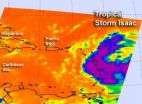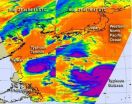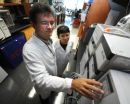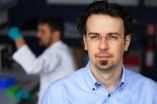(Press-News.org) Every high school kid has done it: putting off studying for that exam until the last minute, then pulling a caffeine-fueled all-nighter in an attempt to cram as much information into their heads as they can.
Now, new research at UCLA says don't bother.
The problem is the trade-off between study and sleep. Studying, of course, is a key contributor to academic achievement, but what students may fail to appreciate is that adequate sleep is also important for academics, researchers say.
In the study, UCLA professor of psychiatry Andrew J. Fuligni, UCLA graduate student Cari Gillen-O'Neel and colleagues report that sacrificing sleep for extra study time, whether it's cramming for a test or plowing through a pile of homework, is actually counterproductive. Regardless of how much a student generally studies each day, if that student sacrifices sleep time in order to study more than usual, he or she is likely to have more academic problems, not less, on the following day.
The study findings appear in the current online edition of the journal Child Development.
"No one is suggesting that students shouldn't study," said Fuligni, the study's senior author. "But an adequate amount of sleep is also critical for academic success. These results are consistent with emerging research suggesting that sleep deprivation impedes leaning."
Students generally learn best when they keep a consistent study schedule, Fuligni said. Although a steady pace of learning is ideal, the increasing demands that high school students face may make such a consistent schedule difficult. Socializing with peers and working, for example, both increase across the course of high school. So do academic obligations like homework that require more time and effort.
As a result, many high school students end up with irregular study schedules, often facing nights in which they need to spend substantially more time than usual studying or completing school work.
Yet, Fuligni said, "The biologically needed hours of sleep remain constant through their high school years, even as the average amount of sleep students get declines."
Other research has shown that in ninth grade, the average adolescent sleeps 7.6 hours per night, then declines to 7.3 hours in 10th grade, 7.0 hours in 11th grade and 6.9 hours in 12th grade.
"So kids start high school getting less sleep then they need, and this lack of sleep gets worse over the course of high school," Fuligni said.
For the current study, 535 Latino, Asian American and European American students in the ninth, 10th and 12th grades were recruited from three Los Angeles–area high schools. They were asked to keep a diary for a 14-day period, recording how long they studied, how long they slept and whether or not they experienced two academic problems: not understanding something taught the following day in class and performing poorly on a test, quiz or homework.
Across the board, the researchers found that study time became increasingly associated with more academic problems, because longer study hours generally meant fewer hours of sleep. In turn, that predicted greater academic problems the following day.
"At first, it was somewhat surprising to find that in the latter years of high school, cramming tended to be followed by days with more academic problems," said Gillen-O'Neel, who works with Fuligni and was the study's first author. "But then it made sense once we examined extra studying in the context of sleep. Although we expected that cramming might not be as effective as students think, our results showed that extra time spent studying cut into sleep. And it's this reduced sleep that accounts for the increase in academic problems that occurs after days of increased studying."
Of course, those students who averaged more study time overall tended to receive higher grades in school. But, said Fuligni, "Academic success may depend on finding strategies to avoid having to give up sleep to study, such as maintaining a consistent study schedule across days, using school time as efficiently as possible and sacrificing time spent on other, less essential activities."
INFORMATION:
Virginia W. Huynh, also of UCLA, was a co-author of the study. None of the authors report any conflict of interest. Support for this study was provided by the Russell Sage Foundation.
The UCLA Department of Psychiatry and Biobehavioral Sciences is the home within the David Geffen School of Medicine at UCLA for faculty who are experts in the origins and treatment of disorders of complex human behavior. The department is part of the Semel Institute for Neuroscience and Human Behavior at UCLA, a world-leading interdisciplinary research and education institute devoted to the understanding of complex human behavior and the causes and consequences of neuropsychiatric disorders.
For more news, visit the UCLA Newsroom and follow us on Twitter.
END
VIDEO:
This animation of satellite observations from August 19-22, 2012, shows the development and movement of Tropical Storm Isaac toward the Lesser Antilles. This visualization was created by the NASA GOES...
Click here for more information.
There are now two active tropical cyclones in the Atlantic and NASA is generating satellite imagery to monitor their march westward. Tropical Storm Issac is already bringing rainfall to the Lesser Antilles today, Aug. 22, Tropical ...
A University of Colorado analysis of state-by-state factors leading to the Electoral College selection of every U.S. president since 1980 forecasts that the 2012 winner will be Mitt Romney.
The key is the economy, say political science professors Kenneth Bickers of CU-Boulder and Michael Berry of CU Denver. Their prediction model stresses economic data from the 50 states and the District of Columbia, including both state and national unemployment figures as well as changes in real per capita income, among other factors.
"Based on our forecasting model, it becomes clear ...
Typhoon Tembin and Typhoon Bolaven continue to churn in the Philippine Sea, and infrared satellite data from NASA showed the power within both storms.
The Atmospheric Infrared Sounder (AIRS) instrument that flies onboard NASA's Aqua satellite captured imagery of both storms on Aug. 21 in two different overpasses. Aqua flies over the same locations during early morning and early afternoon (local time) as it orbits the Earth. Aqua passed over the Philippine Sea on Aug. 21 at 04:41 UTC (12:41 a.m. EDT) and 16:47 UTC (12:47 p.m. EDT). The two satellite passes were combined ...
Scientists at UCLA and the Technion, Israel's Institute of Technology, have unraveled how our brain cells encode the pronunciation of individual vowels in speech.
Published in the Aug. 21 edition of the journal Nature Communications, the discovery could lead to new technology that verbalizes the unspoken words of people paralyzed by injury or disease.
"We know that brain cells fire in a predictable way before we move our bodies," said Dr. Itzhak Fried, a professor of neurosurgery at the David Geffen School of Medicine at UCLA. "We hypothesized that neurons would ...
Using bioluminescent proteins from a jellyfish, a team of scientists has lit up the inside of a neuron, capturing spectacular video footage that shows the movement of proteins throughout the cell.
The video offers a rare peek at how proteins, the brain's building blocks, are directed through neurons to renew its structure. It can be viewed online here: http://www.youtube.com/watch?v=baI9q2--q7s&feature=youtu.be
"Your brain is being disassembled and reassembled every day," said Don Arnold, associate professor of molecular and computational biology at the USC Dornsife ...
Knowing the position of missing oxygen atoms could be the key to cheaper solid oxide fuel cells with longer lifetimes. New microscopy research from the Department of Energy's Oak Ridge National Laboratory is enabling scientists to map these vacancies at an atomic scale.
Although fuel cells hold promise as an efficient energy conversion technology, they have yet to reach mainstream markets because of their high price tag and limited lifespans. Overcoming these barriers requires a fundamental understanding of fuel cells, which produce electricity through a chemical reaction ...
Augusta, GA—Researchers at the Georgia Health Sciences University Cancer Center have identified a gene that disrupts the inflammatory process implicated in liver cancer.
Laboratory mice bred without the gene lacked a pro-inflammatory protein called TREM-1 and protected them from developing liver cancer after exposure to carcinogens.
The study, published in Cancer Research, a journal for the American Association for Cancer Research, could lead to drug therapies to target TREM-1, said Dr. Anatolij Horuzsko, an immunologist at the GHSU Cancer Center and principal investigator ...
Washington, D.C.—Carnegie scientists are the first to discover the conditions under which nickel oxide can turn into an electricity-conducting metal. Nickel oxide is one of the first compounds to be studied for its electronic properties, but until now scientists have not been able to induce a metallic state. The compound becomes metallic at enormous pressures of 2.4 million times the atmospheric pressure (240 gigapascals). The finding is published in Physical Review Letters.
"Physicists have predicted for decades that the nickel oxide would transition from an insulator—a ...
Northwestern University scientists have connected 250 years of organic chemical knowledge into one giant computer network -- a chemical Google on steroids. This "immortal chemist" will never retire and take away its knowledge but instead will continue to learn, grow and share.
A decade in the making, the software optimizes syntheses of drug molecules and other important compounds, combines long (and expensive) syntheses of compounds into shorter and more economical routes and identifies suspicious chemical recipes that could lead to chemical weapons.
"I realized that ...
Enzymes involved in breaking down fat can now be manipulated to work three times harder by turning on a molecular switch recently observed by chemists at the University of Copenhagen. Being able to control this chemical on/off button could have massive implications for curing diseases related to obesity including diabetes, cardio vascular disease, stroke and even skin problems like acne. But the implications may be wider.
The results suggest that the switch may be a common characteristic of many more enzymes. Since enzymes are miniscule worker-molecules that control a ...



